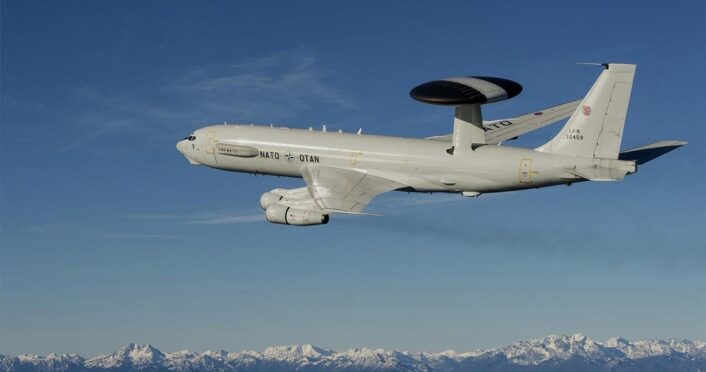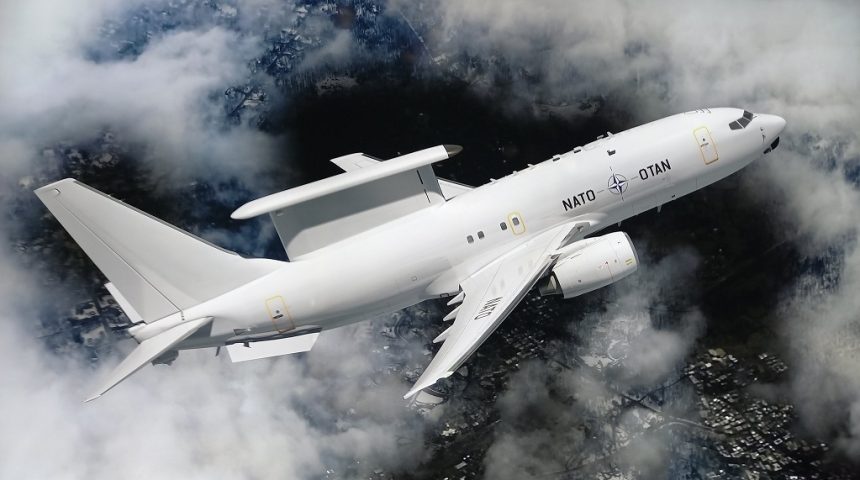The Boeing 737-based AEW platform is expected to be operational from the 2030s.
NATO had decided to replace its fleet of 14 E-3A AWACS (Airborne Warning And Control System) aircraft with six new E-7A Wedgetail aircraft, after a consortium of Allies approved this month what has been defined as one of NATO’s biggest-ever capability purchases. The production of the aircraft is set to begin in the coming years, with the first one expected to be delivered by 2031.
“Surveillance and control aircraft are crucial for NATO’s collective defence and I welcome Allies’ commitment to investing in high-end capabilities,” said NATO Secretary General Jens Stoltenberg. “By pooling resources, Allies can buy and operate major assets collectively that would be too expensive for individual countries to purchase. This investment in state-of-the-art technology shows the strength of transatlantic defence cooperation as we continue to adapt to a more unstable world”.
The NATO Support and Procurement Agency (NSPA) provided some more details, stating that the consortium composed by Belgium, Germany, Luxembourg, the Netherlands, Norway, Romania and the United States concluded that “the E-7A is the only known system currently capable of fulfilling the strategic commands’ essential operational requirements and key performance parameters and available for delivery within the timeframe required”.
The initial Alliance Future Surveillance and Control (iAFSC) capability deal will deliver an initial element to mitigate the risk of airborne surveillance and control capability gap, says the NSPA, as the current AWACS fleet will be retired around 2035, just four years after the expected delivery of the first E-7. The agency added that the E-7A will ensure a “smooth transition from the existing capability across other lines of development and into the future”.
Among the NATO members, Turkey already operates the Wedgetail, while the United States and United Kingdom have selected the E-7 as replacement for their own AWACS aircraft. Sweden, which could finally join NATO as early as this month, has selected for its air force the other contender for the AWACS replacement, the Saab GlobalEye.

Boeing says the E-7 provides a fully integrated, combat-proven, flexible command and control node that delivers multi-domain awareness in the most challenging operational environments. The E-7’s open systems architecture and agile software design enable the aircraft’s capabilities to evolve and remain ahead of future threats.
In 2020 Boeing announced that works were in progress to upgrade the E-7 by integrating Open Mission Systems-compliant components. Specifically, Boeing integrated its Battle Management Command and Control (BMC2) system with an unspecified advanced wide-band Active Electronically Scanned Array (AESA) radar developed by Northrop Grumman.
Northrop Grumman is the developer of the Multi-role Electronically Scanned Array (MESA) radar located on a dorsal fin on top of the E-7’s fuselage, which provides 360-degree surveillance capability (although it doesn’t rotate like the E-3 Sentry’s antenna) with both air-to-air and air-to-surface coverage with and integrated Identification Friend or Foe system.
The NATO E-7 fleet is expected to be based at Geilenkirchen airbase in Germany, where the E-3 fleet is based, and will also operate from the forward operating bases across Europe. The Wedgetail will be part of the Alliance Future Surveillance and Control system of systems capability, which will also include space and maritime intelligence, surveillance and reconnaissance assets, along with the already operational RQ-4 Alliance Ground Surveillance.









